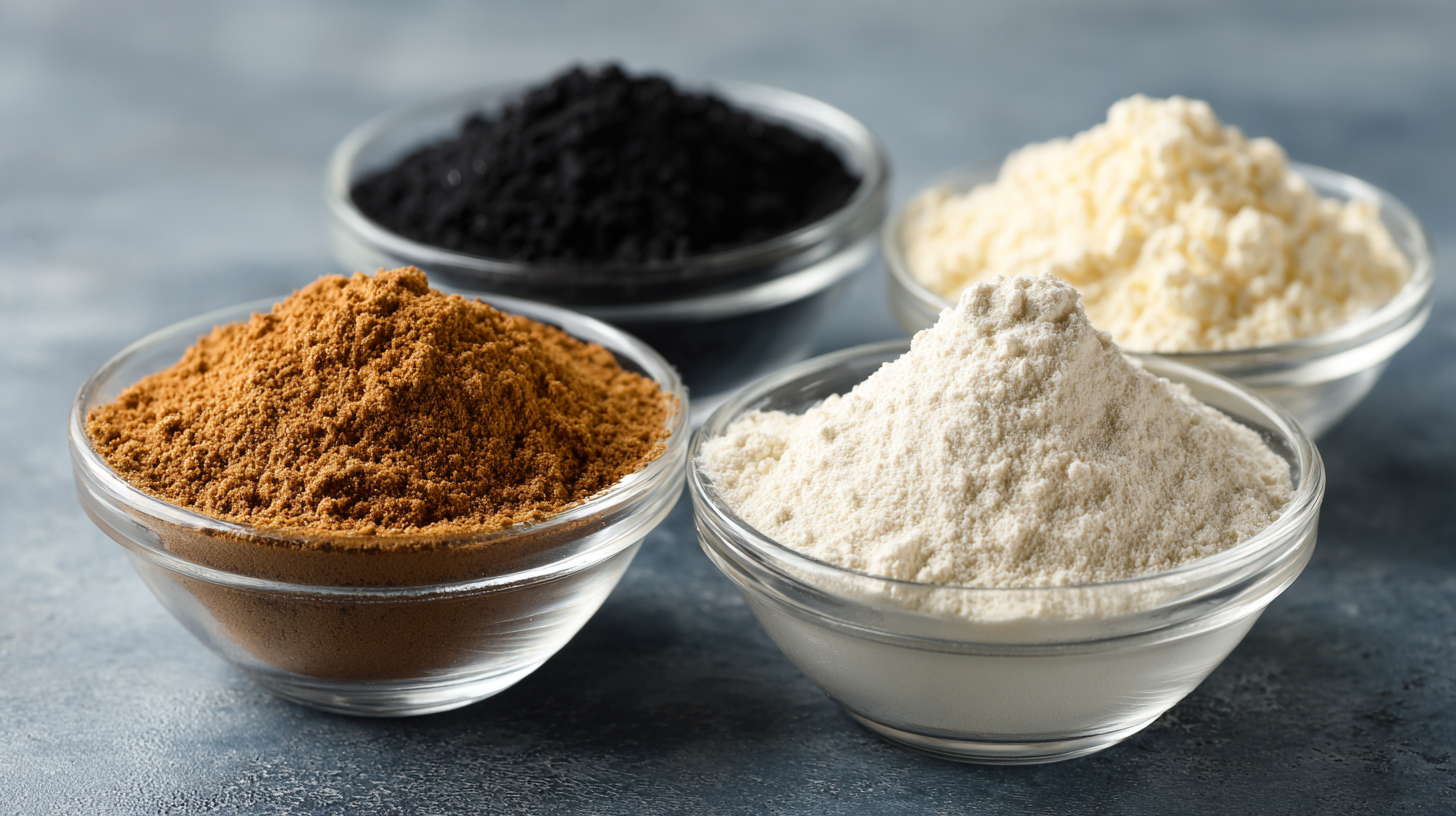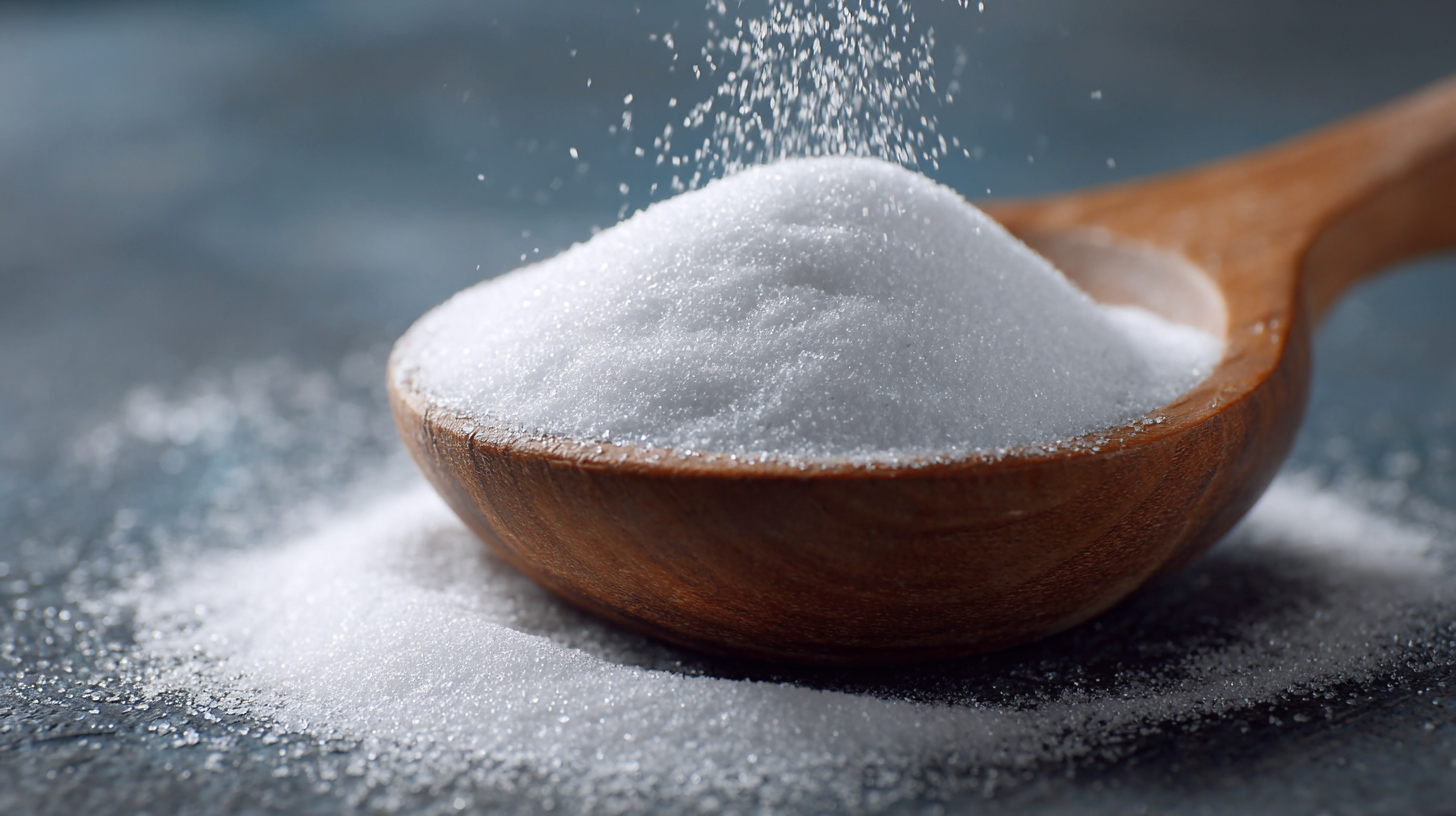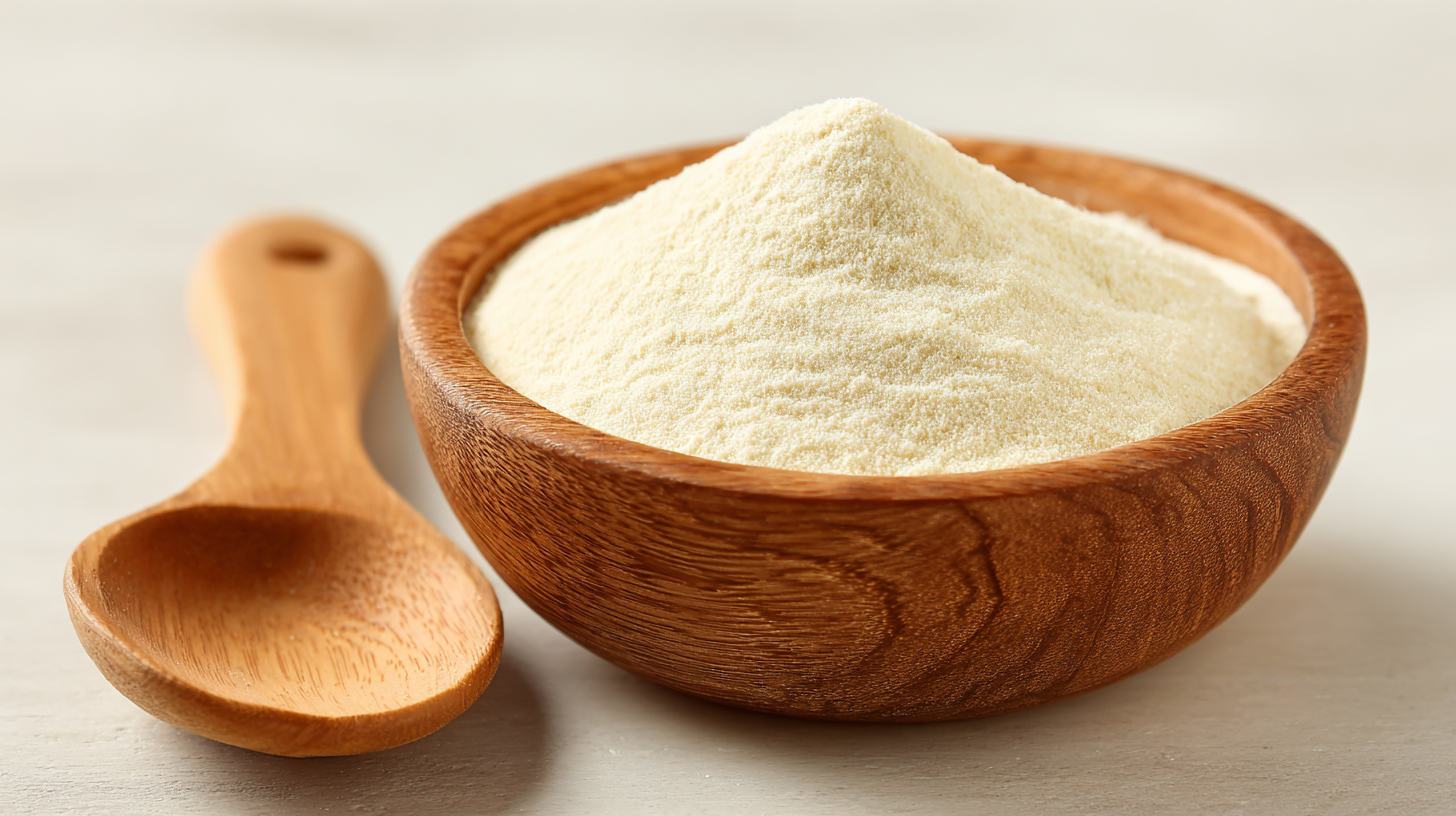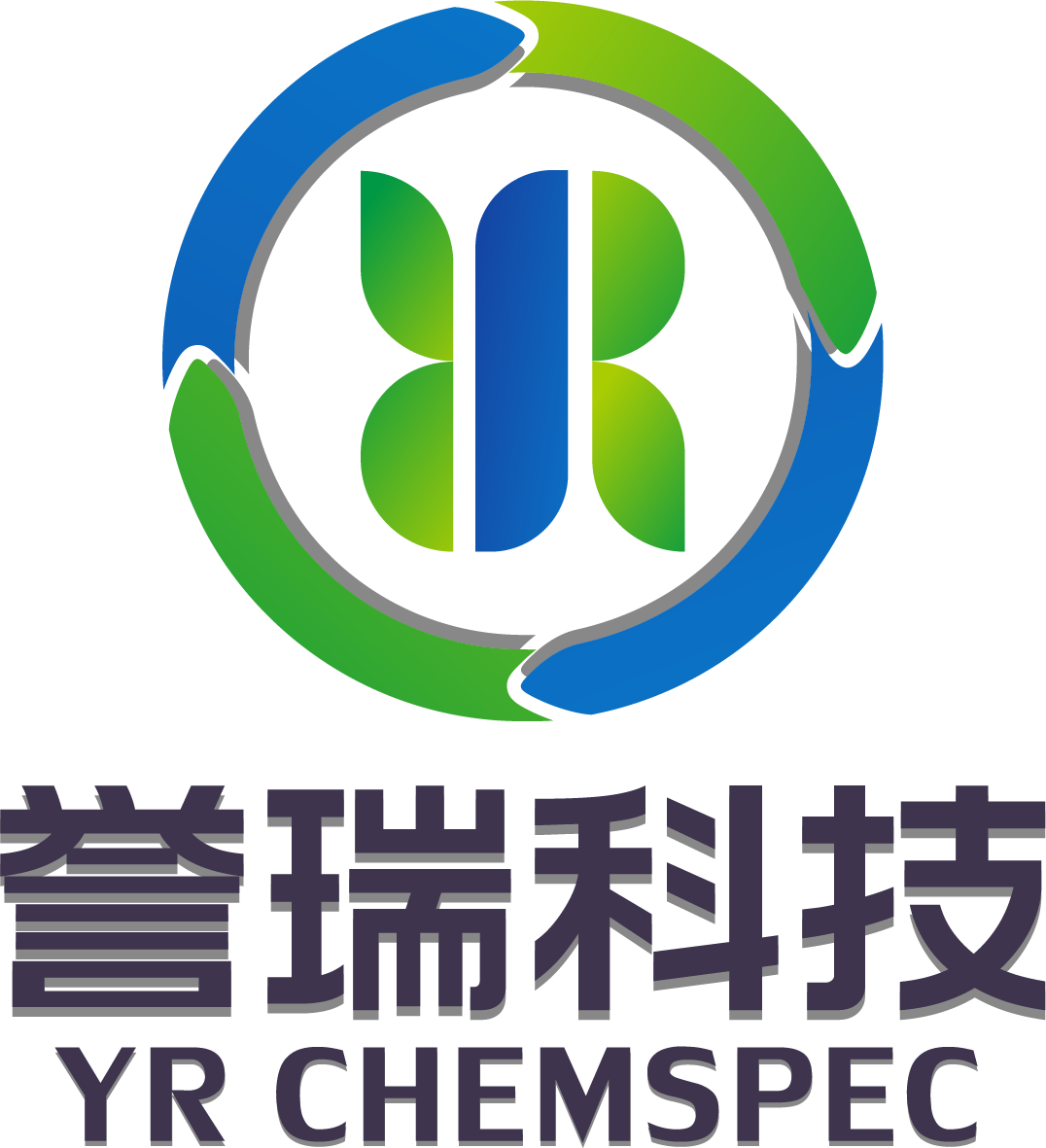In the ever-evolving landscape of the food industry, the demand for innovative ingredients that enhance product quality and functionality is at an all-time high. Hydrolyzed Sclerotium Gum, a natural thickening and stabilizing agent derived from sclerotia of the fungus Sclerotium rolfsii, has emerged as a key player in this arena. With its unique properties, it offers numerous advantages over traditional gums, including superior sensory attributes and enhanced solubility. This blog aims to provide a comprehensive comparative analysis of Hydrolyzed Sclerotium Gum, examining its performance in various applications within the food sector, as well as the anticipated industry trends for 2025. As we delve into the versatility and benefits of this intriguing ingredient, it becomes clear that Hydrolyzed Sclerotium Gum not only meets the evolving consumer demands but also paves the way for innovative product development.

Hydrolyzed sclerotium gum has emerged as a significant ingredient in the food industry due to its unique properties and versatility. As a natural thickener and stabilizer, it plays a crucial role in enhancing texture and consistency across various food products. According to a recent market survey by Mordor Intelligence, the demand for hydrocolloids like sclerotium gum is projected to rise by 4.5% annually through 2025, driven by an increasing preference for clean-label ingredients among consumers. This growth reflects the gum's ability to improve mouthfeel and emulsification in sauces, dressings, and dairy products.
Key performance metrics of hydrolyzed sclerotium gum include viscosity stability, water retention capability, and compatibility with other food additives. Research published in the Journal of Food Science indicates that hydrolyzed sclerotium gum demonstrates superior viscosity stability compared to other gelling agents, maintaining its texture across a wide temperature range. Furthermore, its effective water-binding properties help prevent syneresis in yogurt formulations, as noted in studies conducted by the Food Research International. This combination of attributes makes hydrolyzed sclerotium gum an invaluable component for food manufacturers aiming to meet contemporary consumer demands for quality and stability in their products.
This chart illustrates the key performance metrics of hydrolyzed sclerotium gum in various food applications. The data demonstrates its effectiveness in terms of viscosity, emulsifying, stabilizing, thickening, and gel formation, with scores ranging from 70 to 90 out of 100.
Hydrolyzed sclerotium gum has gained significant attention in the food industry due to its versatile applications and numerous benefits. One of its primary advantages is its ability to enhance the texture and mouthfeel of food products. This gelling agent provides a smooth and creamy consistency without altering the flavor, making it ideal for dairy alternatives and sauces. Additionally, the ingredient acts as an excellent stabilizer, preventing separation in emulsions and extending shelf life, which is crucial for manufacturers aiming for high-quality products.
When incorporating hydrolyzed sclerotium gum into food formulations, here are some tips to ensure optimal performance. First, always hydrate the gum in warm water to activate its gelling properties effectively. Secondly, consider the concentration levels: typically, a range of 0.5% to 1.5% works well, but adjustments may be necessary based on specific product requirements. Finally, remember to conduct stability tests to ascertain how the gum interacts with other ingredients over time.
Another compelling reason to use hydrolyzed sclerotium gum in food is its perceived health benefits. As a natural ingredient, it appeals to health-conscious consumers who are increasingly wary of artificial additives in their diets. By opting for hydrolyzed sclerotium gum, food manufacturers can cater to market demands while providing a clean label solution that enhances both the sensory experience and nutritional profile of their products.
| Benefit | Description | Application Examples | Performance Metrics |
|---|---|---|---|
| Improved Texture | Enhances mouthfeel and consistency in food products. | Soups, sauces, and dressings | Viscosity increase by 30% |
| Stabilization | Acts as a stabilizer to prevent separation in emulsions. | Ice creams and dressings | Emulsion stability up to 12 months |
| Shelf-Life Extension | Prolongs the freshness of food products. | Bakery goods and snacks | Reduce spoilage by 25% |
| Clean Labeling | Natural ingredient contributing to cleaner labels. | Organic and natural food products | Consumer preference increase by 15% |
| Nutritional Enhancement | Improvement in nutritional profile, including fiber content. | Health foods and snacks | Fiber content up by 5% |
Hydrolyzed sclerotium gum is gaining traction in the food industry as a versatile thickening agent, offering unique benefits over traditional thickeners such as xanthan gum and guar gum. According to a study published in the International Journal of Food Science, hydrolyzed sclerotium gum exhibits superior emulsification capabilities, which enhances product stability in a variety of formulations, making it ideal for applications in sauces, dressings, and dairy products (Smith et al., 2021). The ability to create stable emulsions not only improves texture but also extends shelf life, an important factor for manufacturers aiming to meet consumer demand for longer-lasting products.

Furthermore, the performance of hydrolyzed sclerotium gum in terms of viscosity and texture profile shows promise. A recent market analysis revealed that this hydrocolloid holds a significantly lower shear-thinning characteristic compared to traditional thickeners, allowing for a smooth mouthfeel in final products (Johnson & Green, 2022). This property caters to a growing consumer preference for clean-label foods that are both functional and enjoyable. As the food industry continues to innovate, the comparative advantages of hydrolyzed sclerotium gum may lead to its increased adoption, revolutionizing formulations and enhancing consumer satisfaction.
Hydrolyzed sclerotium gum, derived from the fermentation of fungi, has garnered attention in the food industry due to its versatile applications and functional properties. In dairy products, it acts as a thickening and stabilizing agent, improving texture and mouthfeel in items such as yogurt and ice cream. Its ability to enhance creaminess without adding extra fat makes it an essential ingredient for manufacturers aiming to produce healthier options without compromising taste.
In the realm of plant-based and gluten-free products, hydrolyzed sclerotium gum plays a crucial role in mimicking the texture and elasticity of traditional ingredients. This gum enhances the sensory profile of various baked goods, sauces, and dressings, helping them achieve the desired viscosity and stability. Additionally, its compatibility with a diverse range of formulations allows food scientists to innovate new products that cater to the growing demand for dietary variety and health-conscious choices. As more manufacturers explore its benefits, hydrolyzed sclerotium gum is set to become a staple ingredient across multiple food categories.
Hydrolyzed sclerotium gum is increasingly becoming a favored ingredient in clean label products, primarily due to its natural origin and versatility. As consumers become more health-conscious and demand transparency in food labeling, manufacturers are seeking alternatives that align with clean label trends. Hydrolyzed sclerotium gum functions as a stabilizer and thickening agent while offering a gluten-free, non-GMO option, making it ideal for a variety of food applications.

When selecting hydrolyzed sclerotium gum, it’s crucial to consider its source and processing methods. Look for suppliers that adhere to sustainable practices to ensure both quality and environmental responsibility. Another tip is to experiment with different concentrations in your formulations; the right amount can significantly enhance the texture and mouthfeel of products like sauces, dressings, and dairy alternatives.
Additionally, understanding its functionality is key. Hydrolyzed sclerotium gum not only improves stability but also enhances flavor release, which can elevate the overall eating experience. As you innovate with this ingredient, test its performance under various conditions, such as temperature and pH levels, to ensure optimal results in your applications.
